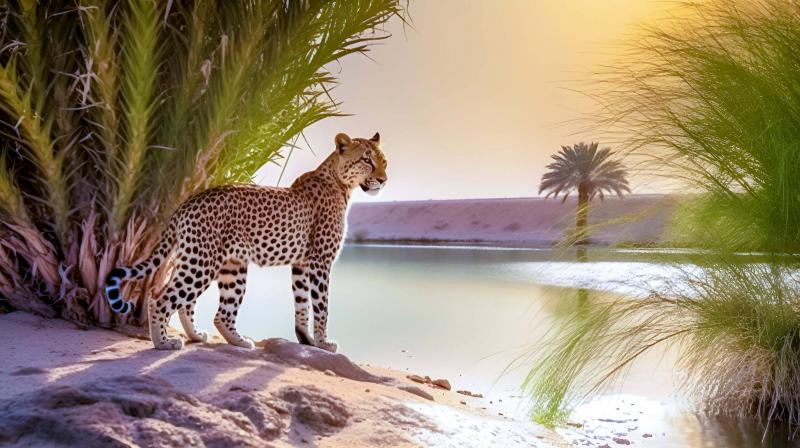The United Nations General Assembly has adopted a resolution declaring February 10 of each year as International Day for the Arabian Leopard, "given its vital importance to the ecological system in the Arabian Peninsula." The resolution notes that the Arabian leopard is one of the 9 recognized species of leopards by the International Union for Conservation of Nature (IUCN), being "the smallest and most distinctive species, critically endangered."
The resolution highlights the rapid disappearance of the Arabian leopard from vast areas where it once roamed in the Arabian Peninsula as a significant setback for biodiversity conservation and sustainability in the region. The UN General Assembly welcomed regional initiatives for cooperation among countries sharing the habitat of wildlife and natural resources.
It pointed out that the greatest threats to the survival of the Arabian leopard are habitat loss and fragmentation, depletion of prey, and illegal trafficking. The assembly referenced the animal species in the Arabian Peninsula listed on the so-called Red List of Threatened Species issued by the IUCN. These species include: the Arabian leopard, the hawksbill sea turtle, whale shark, Arabian oryx, and the dorcas gazelle. The UN resolution affirmed the importance of these species to the ecosystem and their role in maintaining its balance.
The General Assembly stressed the urgent need to address the unprecedented global decline in biodiversity through means, including the protection of endangered species and the conservation of ecosystems. The draft resolution was presented by 12 countries: Jordan, the United Arab Emirates, Bahrain, Oman, Qatar, Kuwait, Morocco, Saudi Arabia, Mauritania, Yemen, Azerbaijan, and Kazakhstan.




